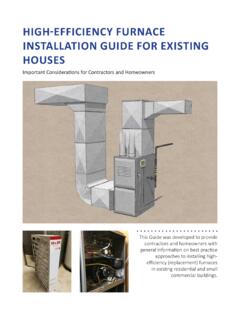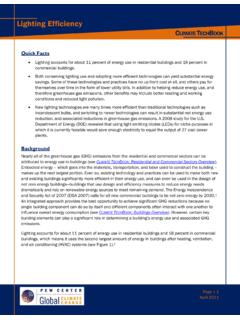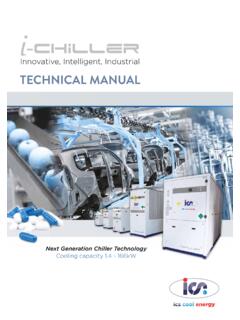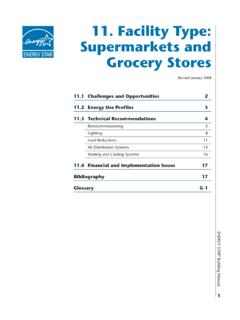Transcription of Waste to Wealth
1 Sub Theme- III. Waste to Wealth Waste to Wealth Background Waste is a natural by-product of the phenomena of life and growth of societies. It is viewed as unwanted or unusable material that has been disposed or discarded after primary use. Plants shed leaves, animals excrete. Humans in their day to day life create a boundless heap of Waste of countless variety. Industrialization is inevitable for the development of any nation. It leads to demand for a variety of goods for improving habitat and standards of living, greater production, as well as greater consumption. This escalates production of Waste in variety of forms, many of which cause serious environmental pollution and degradation. Persons with disability are prone to greater threat from mishandling of Waste .
2 In the absence of proper mechanisms for disposal and management, Waste is often viewed as a menace. It not just spoils the aesthetics of living spaces, but becomes a source of pollution and poses a major hazard to health and life of all organisms. Efficient handling of Waste is an important factor in the developmental progress of any nation and the health of its people. Effective management of Waste is now a national priority as seen through the Swachch Bharat Mission. This seeks to sensitize every citizen, especially the young, and make them a partner in creating a clean nation. Waste is deeply linked to lifestyle choices. Each time we decide to use the blank side of a printed paper, turn off lights and fans on leaving a room, use water judiciously, take on our plate only as much food as we can eat, decide not to use a plastic bag, we contribute to reduction of Waste or resources.
3 In fact, since times immemorial, all societies and cultures have looked for effective management of Waste and often, to put it to good use. Used and discarded materials are transformed to beautiful artifacts. Leftovers from food commonly form the 63. base for fresh dishes. The patched quilt is generally found across cultures. Generation of less Waste , reuse of consumables, recycling of Waste and recovery of valuable resources from Waste are considered as good practices. They help conserve valuable natural resources and energy and also lower environmental damage caused by socio-economic development. Thus Waste management is strongly linked with the idea of sustainable development. Meeting the goals of sustainable development is an outstanding global challenge.
4 So is Waste management. Finding innovative solutions for effective management of Waste is difficult as breakdown of Waste requires special processes that entail time, energy , and expense. The new thinking is to address the problem at the grassroots starting at the very origin of Waste generation. It is now recognized that we cannot afford to lose it as mere Waste '. Instead, it is important to view Waste ' as a valuable resource' that can be converted into a variety of useful products. This process of conversion of Waste to a product that can be put to primary use can be viewed as a process of generating Wealth . Hence the phrase Waste to Wealth '. Waste management that leads to generation of substances and products that can be put to primary use is an emerging major sector for employment to meet the livelihood needs of the vast majority of India's rapidly growing population.
5 Given the magnitude of Waste generated, innovative Waste conversion processes can create micro-entrepreneurship opportunities on a massive scale. In India, the potential of Waste to Wealth enterprise is very high. Currently not enough has been done. Increasing opportunities for this enterprise can have manifold advantages. It can bring back useless, discarded Waste products into economic use and lead to 1. Reduction of pressure induced by Waste on the environment;. 2. Creation of opportunities for income and employment generation in a relatively new area thereby enhance economic activity; and 3. Impact quality of life. Objectives To understand the challenge posed by Waste and its impact on environment and health.
6 How day-to-day activities generate Waste ;. classification of different types of Waste and mechanisms for their disposal;. concept of 5R: Refuse, Reduce, Reuse, Recycle, Recover;. hazards posed to health and environment and safety measures to be adopted in handling Waste ;. innovative processes that generate products from Waste creating Wealth ;. the scope of livelihood generation through entrepreneurship. 64. Scope of the Sub Theme The primary focus of this sub theme is to understand the science and art of Waste management and product development. It will trace the life cycle of various forms of Waste , starting from its generation to diverse forms of disposal; classification as biodegradable or non bio-degradable and hazardous or non-hazardous; process for management; mechanisms for conversion to usable products, if any; impact on health, environment and socio-economic issues.
7 Waste : Types & Nature Definition: Wastes are unwanted or unusable objects or materials which are discarded after primary use, or declared as worthless, defective and of no use. Municipalities require these to be disposed of by the provisions of national law. Examples include Municipal Solid Waste (MSW) which is household trash/refuse, hazardous Waste , wastewater (such as sewage, which contains bodily wastes faeces and urine . and surface runoff), radioactive Waste , e- Waste and others. Hazardous Waste Hazardous Waste is any Waste which by reason of characteristics such as physical, chemical, biological, reactive, toxic, flammable, explosive or corrosive, causes danger or is likely to cause danger to health or environment, whether alone or in contact with other wastes or substances.
8 65. Biodegradable (Bio- Waste ). Definition: Biodegradable materials are composed of Waste from living organisms and the actual plant, animal or other organisms when its life ends. Examples: These include human and animal Waste ; plant products, wood, paper, food Waste , leaves, grass clippings and other horticulture Waste ; and remains from death of living creatures such as animal carcasses. Hazards posed: It is usually believed that biodegradable Waste does not cause environmental damage and is harmless. However, a quick glance at our own habitat is enough to prove that it poses health if not disposed of properly. Stagnant Waste emits foul smell as it decays and becomes a breeding ground for mosquitoes and other disease causing organisms.
9 Rotting Waste emits greenhouse gases such as methane, carbon dioxide and produces chemicals like ammonia. Too much of biodegradable Waste in water can deplete oxygen impacting marine life. Again, too much of cattle manure can cause health concerns. Another major problem arises when instead of being segregated and composted, biodegradable Waste ends up in large garbage dumps or landfills and gets buried under mounds of non biodegradable Waste , rendering it difficult for microorganisms to break it down. Bio-degradation or decomposition: This is the process of changing biodegradable materials into a useful resource. A quick look at any ecological system shows widespread synergy between organisms. Waste from one living entity often helps create a healthy environment for another organism, providing nourishment and conditions conducive for its survival and growth.
10 Decayed organic material (compost) is commonly used as manure or 66. fertilizer for growing plants. It improves soil structure and provides nutrients. The process of compositing requires making a heap of wet organic matter known as green Waste (leaves, food Waste ) and waiting for the materials to break down into humus after a period of weeks or months. The decomposition can be accelerated by other living organisms such as bacteria, fungi, insects, worms, etc. and abiotic elements like temperature, moisture, oxygen, ultraviolet light, etc. Creating sustainable Wealth Organic Agriculture: With greater sensitivity to issues related to sustainable development, agro-ecological farming methods are gaining in popularity.











